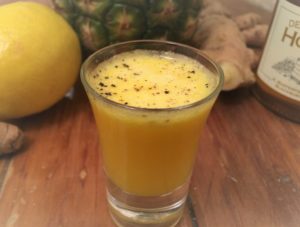The clocks go back an hour this weekend, and many of us (me included!) will be dreading the thought of several long months ahead of getting up in the pitch black and coming home from work in the dark. We slip into ‘hibernation’ mode – struggling to get up in the mornings, craving comfort food and spending our evenings on the sofa in front of Strictly and X Factor with a tub of Pringles.
The truth is, it is quite natural to have less energy in the winter. This is a normal, seasonal adaptation that, in evolutionary terms, would have been useful in reducing our activity at a time when food was scarce. A few hundred years ago, we would have had no choice but to adapt our behaviour in winter. Most people would have worked outside, so the working day would have started later and finished earlier to coincide with daylight hours. Without electricity, our ancestors would have carried out quiet evening activities by candlelight before retiring to bed early. We would have relied on seasonal produce growing in our garden or from the farmer down the road and food that we had stored or preserved during the more abundant months. Now, with electric lights, cars, communications technology and imported food, we fight this natural instinct to slow down and attempt to continue our normal routines throughout winter, even though our evolutionary biology may not have quite caught up yet.
Whilst most of us find that our energy dips once Autumn arrives, some people seem to be more affected by the change in seasons than others. Seasonal Affective Disorder (SAD) is a mood disorder in which people whose mental health is normal during the rest of the year regularly experience symptoms of depression during a specific season (most commonly autumn and winter). Symptoms of SAD include difficulty waking up in the morning, a tendency to sleep more and overeat (particularly craving carbohydrates), low energy, difficulty concentrating and withdrawing from friends, family and social situations.
Whilst scientists haven’t yet established the cause of SAD, individuals with SAD have been found to have lower levels of Vitamin D (the ‘sunshine’ vitamin), lower serotonin (a mood-enhancing neurotransmitter that contributes to feelings of wellbeing and regulates hunger), lower cortisol (an adrenal hormone responsible for waking us up in the morning), and increased levels of melatonin (the neurotransmitter that initiates and maintains sleep).
Here are my top tips to beat the winter blues:
1) Eat plenty of protein – ideally at every meal. Meat, poultry, eggs, cottage cheese, nuts and seeds contain the amino acid tryptophan which your body converts into mood-lifting serotonin.
2) Choose your carbohydrates wisely. It makes sense that we crave carbohydrates when our mood is low, since eating carbs triggers insulin production, which helps to transport tryptophan into the brain, where it can be converted to serotonin. However, some carbs are better than others. Choose carbs with a low glycemic load (GL) that provide a steady and sustained release of glucose into the blood stream. Good swaps include pumpernickel or rye bread instead of white bread; porridge oats instead of sweetened cereals; basmati rice or couscous instead of white rice; baby potatoes, sweet potato or butternut squash instead of baked potato or chips.
3) Eat oily fish 2 or 3 times a week. Oily fish is a good source of the omega 3 fats DHA and EPA which have been shown to reduce symptoms of depression.
4) Get as much natural daylight as you can. This will help to supress melatonin during the day and keep your circadian rhythm (‘body clock’) in check.
5) Use a sunrise clock. These mimic the effect of sunrise by gradually increasing the level of light, helping to supress melatonin and trigger cortisol production which helps to gently wake you up in the morning.
6) Top up your Vitamin D levels. If you can’t get away for a week somewhere sunny and warm, consider taking a supplement in the D3 form. Ideally, get your vitamin D levels tested first. You are more likely to be vitamin D deficient if you are older, have dark skin, avoid tanning, are pregnant, or are taking cholesterol-lowering medication (since cholesterol is the raw material that your body uses to make vitamin D).
7) Avoid bright lights and computer screens for an hour before bed, as these can supress melatonin production and make it more difficult to get to sleep.
8) Go to bed earlier. You probably find that you feel tired earlier in the evening in the winter. If at all possible, listen to your body and go to bed when you start to feel tired. Trying to fight through tiredness in the evening can trigger cortisol production which will make you feel alert and awake when it is time to go to bed.
9) Celebrate the change in the seasons! Build a bonfire, visit the Christmas markets, go for a walk in the woods and admire the autumn leaves, curl up in front of a log fire, buy a new hat, scarf or winter coat. Doing this will build up positive associations with autumn and winter and leave you looking forward to this time of year next time around!

